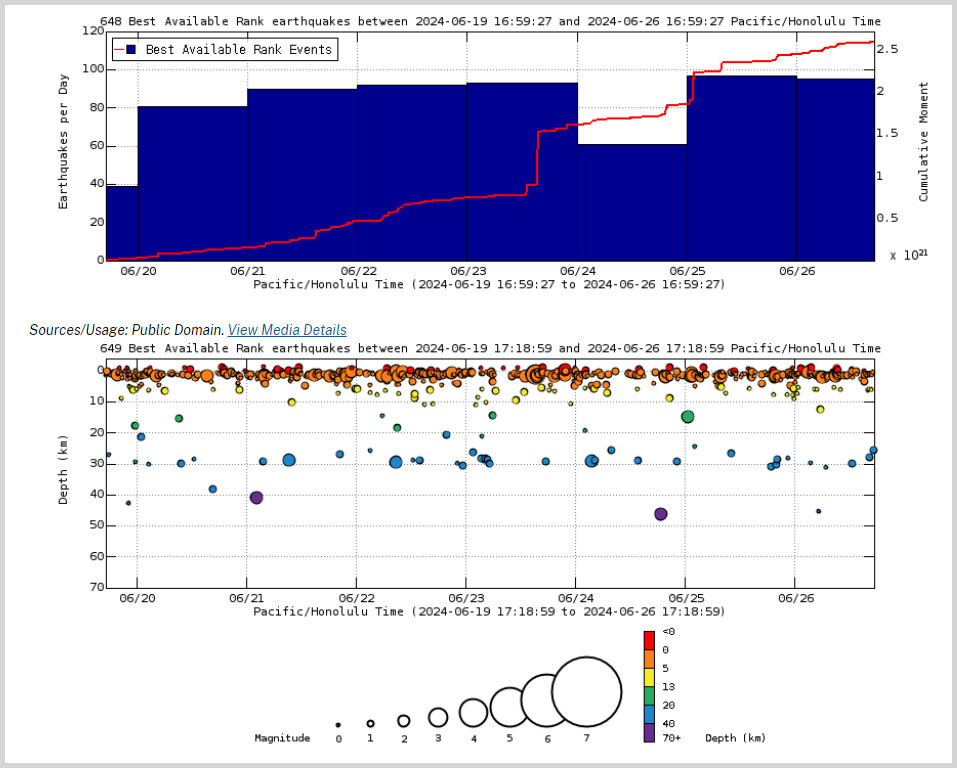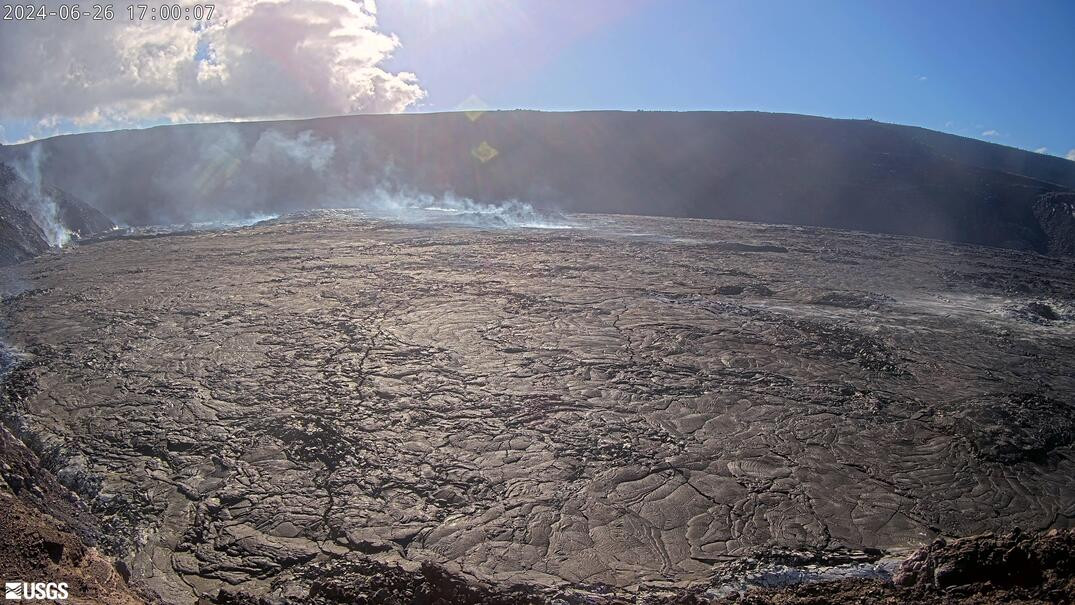(BIVN) – Kīlauea is not erupting, and the USGS Volcano Alert Level remains at ADVISORY.
Earthquake counts and rates of inflationary ground deformation in the summit and upper rift zones continue to be moderately elevated, the USGS Hawaiian Volcano Observatory reports.
The number of earthquakes under Kīlauea is on pace to be the highest total in over a week. This moderately elevated behavior has persisted since the end of the brief June 3 eruption southwest of the summit.
There are no temporary closures in place within Hawaiʻi Volcanoes National Park due to the activity. Scientists continue to say that “increases in seismicity and/or deformation could result in a new eruptive episode within or near the summit region.”
From the USGS HVO report posted on Wednesday, June 26:
Summit and Upper Rift Zone Observations: There were 80 earthquakes detected beneath the summit region over the past 24 hours, mostly below the south caldera region at depths of 1.5–3 km (1–1.8 mi), The largest event had a magnitude of 2.5, though most events had magnitudes of 2.0 or less. Rates of ground deformation at the summit increased slightly in the past day, approaching rates observed a few days ago: both the Uēkahuna tiltmeter northwest of the summit and the Sand Hill tiltmeter southwest of the summit recorded approximately 4 microradians of inflation over the past 24 hours. The most recent measurement of the summit’s SO2 emission rate was approximately 50 tonnes per day on June 10, 2024; accordingly, total SO2 emissions from the summit and recent eruption site are likely less than 200 tonnes per day.

Above Top: Number of earthquakes per day during the past week (blue bars). The red line is the cumulative moment (energy) release. Bottom: Depth of earthquakes during the past week in the area shown on the map above. Depth is reported relative to sea level, which is equal to a depth of zero on the above plot. On both figures, circle-size represents magnitude, and color indicates depth. (USGS graphs)
Middle and Lower Rift Zone Observations: Rates of seismicity and ground deformation beneath the middle and lower East Rift Zone and lower Southwest Rift Zone remain low. Recent eruptive activity and ongoing unrest have been restricted to the summit and upper rift zone regions. Measurements from continuous gas monitoring stations downwind of Puʻuʻōʻō in the middle East Rift Zone—the site of 1983–2018 eruptive activity—remain below detection limits for SO2, indicating that SO2 emissions from Puʻuʻōʻō are negligible.
Analysis: Following the June 3 eruption, magma has been repressurizing the storage system beneath Halemaʻumaʻu and the south caldera region, activating earthquakes in the upper East Rift Zone and in the caldera south of Halemaʻumaʻu. At this time, it is not possible to say whether this increase in activity will lead to an intrusion or an eruption in the near future, or simply continue as seismic unrest at depth. Changes in the character and location of unrest can occur quickly, as can the potential for eruption, but there are no signs of an imminent eruption at this time.
USGS HVO says it will continue to provide daily updates on Kīlauea volcano.


by Big Island Video News5:25 pm
on at
STORY SUMMARY
HAWAIʻI VOLCANOES NATIONAL PARK - Earthquake counts and rates of inflationary ground deformation remain moderately elevated in the summit and upper rift zones.